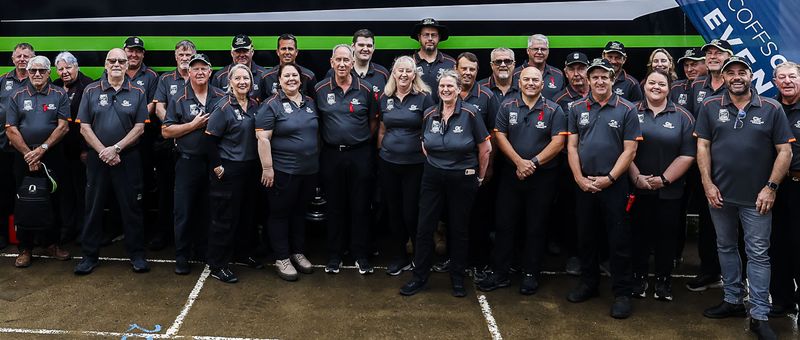
South Australian kart racer and STEM student Jackson Burford
Jackson Burford has a unique story when it comes to his karting journey, and it all started from being involved in a STEM (Science, Technology, Engineering, and Mathematics) program at school as a younger child.
Just last year, Burford watched the Formula 1Australian Grand Prix, which sparked his interests further than space and STEM alone. The teenager found a new passion within the world of F1, opening up his entire domain to new opportunities. Following this event he since started karting coupled with competing online with sim racing, both of which have enabled him to broaden his horizons.
Burford is a prime example of what beneficial opportunities can arise from being involved in STEM. He has just become the youngest person to ever launch an individual, non-school based, project to space – which launched on a SpaceX Rocket, he is still determined to chase a fast-paced career in motorsport.
According to the 13 year-old South Australian, karting and STEM corelate, making karting much more fun, relaxing, and competitive with both the skill and pace needed to remain up the front of the pack.
“Karting brings STEM to life, and they cross over a lot more than people realise because they aren’t just two completely different things,” said Buford.
“Karting, you learn so much with STEM about higher pressures – the engineering and kart set up, gear ratios, so much more! There’s so much STEM in karting; there’s so many projects you can do in STEM that will also relate the other way around that you can bring from karting. You can cross them over in so many ways.”
A member of the Barossa Go Kart Club, Burford has also made his mark in science, most recently being named an ambassador for the Oliphant Science Awards in South Australia. In his debut year of karting, he secured five podiums in the 4SS Junior and KA3 Junior classes, and notched up 12 wins as a sim racer – regularly competing against real-world drivers.

Burford is a firm believer in the fact that every track you go to, or Kart you driver, there’s going to be physics and science behind it.
His transition from science to sport is both unique and compelling. Having already achieved so much in the STEM world, he’s now applying that knowledge to motorsport, evolving his driving craft from the lab to the racetrack. Burford is well aware of the competitive edge his background provides – and he’s encouraging other young drivers to embrace STEM as a tool for on-track success.
“Karting isn’t just about learning where your markers are, but it is about learning the STEM behind everything. Every track you go to, or Kart you driver, there’s going to be physics and science behind it,” said Burford.
“Learning to understand it will make you so much faster, not just by a couple tenths, but it can be around, in many cases, up to seconds! You can set faster a lap time, just by understanding the STEM behind it all.”
Echoing Burford’s insights is Professor Amy MacDonald, who is undertaking pioneering research into the relationship between STEM and karting — the first of its kind. What began as casual observations in the paddock with her family has turned into a broader investigation into the learning and developmental benefits karting offers.
The research MacDonald has pursued is the first of its kind, making the topic simply exploratory. STEM and Karting turned from a keen eye on the karting paddock and their conversations with her family, to researching a broader idea of how STEM interacts or correlates with Karting as a sport, any pattens that form, including the learning opportunities that can evolve from STEM.
“From our research, we found that the vast majority [of karters], were confident in their STEM learning at school; they are interested, they think karting has made them more interested in it – and they’re talking about subsuming careers in motorsport and beyond that,” said MacDonald.
“There’s a huge interest in engineering careers. It’s really exciting! It’s this whole new pathway that might have opened up a STEM trajectory for kids that may otherwise not have had that trajectory.
“There is so much more that we can explore, but this is the first piece of research in a whole new area; and it’s showing some really exciting findings.”
“They’re talking about the trajectory of the kart, they’re talking about their timing intervals to hundredths of a second. It’s a really sophisticated, conceptual knowledge that they’re applying,
“That’s what’s so brilliant about karting. They’re using this knowledge in a way that means something to them. And they’re doing it almost naturally because it’s in this context where they’re enjoying what they’re learning.”
The conversations in the karting paddock showcased some incredible intel for MacDonald, enabling an entrance into a niche and important area of study for the Karting world – STEM.
“The conversations that were happening with parents, mums and dads, grandparents, and kids about how they were going to get that extra tenth, where they should position their kart differently so they can take a different line around a corner. Even talking about engineering design and kart set up to better benefit their times,” added MacDonald.
“The takeaway [of the study] is just raising awareness; that karting is a great sport, a great community, and a great learning environment for children and their families.”
Burford’s journey, and MacDonald’s research shows how karting and STEM are a powerful combination, driving curiosity, learning, and performance both on the track and beyond.






















